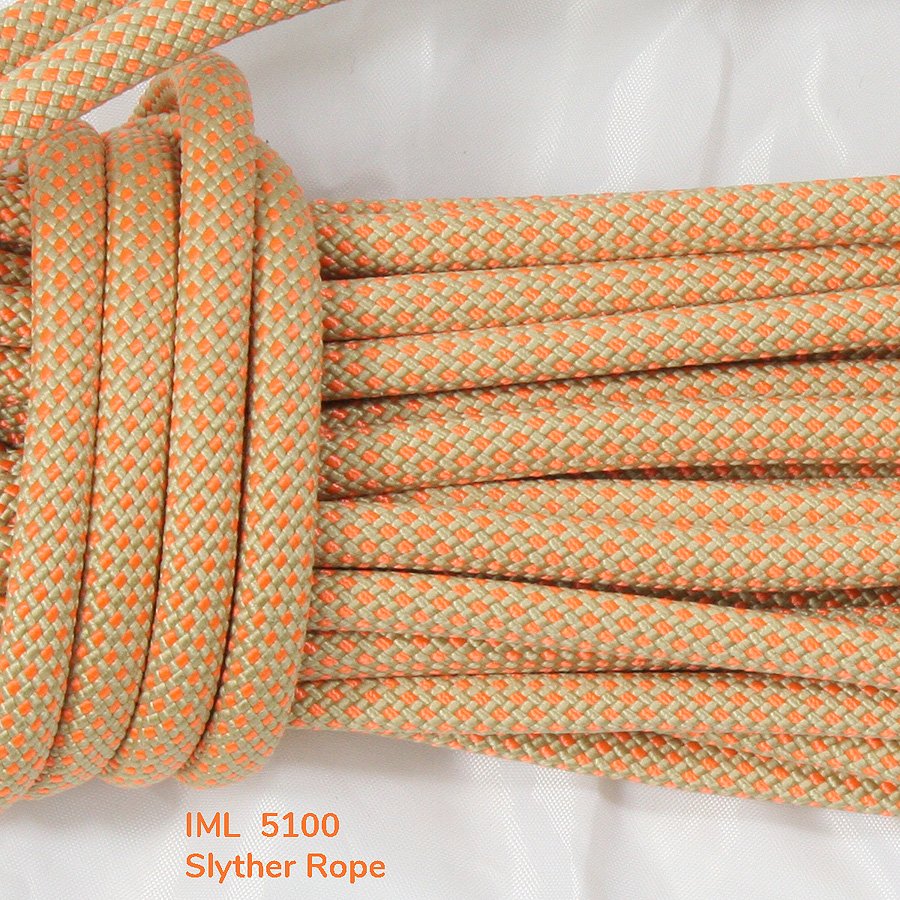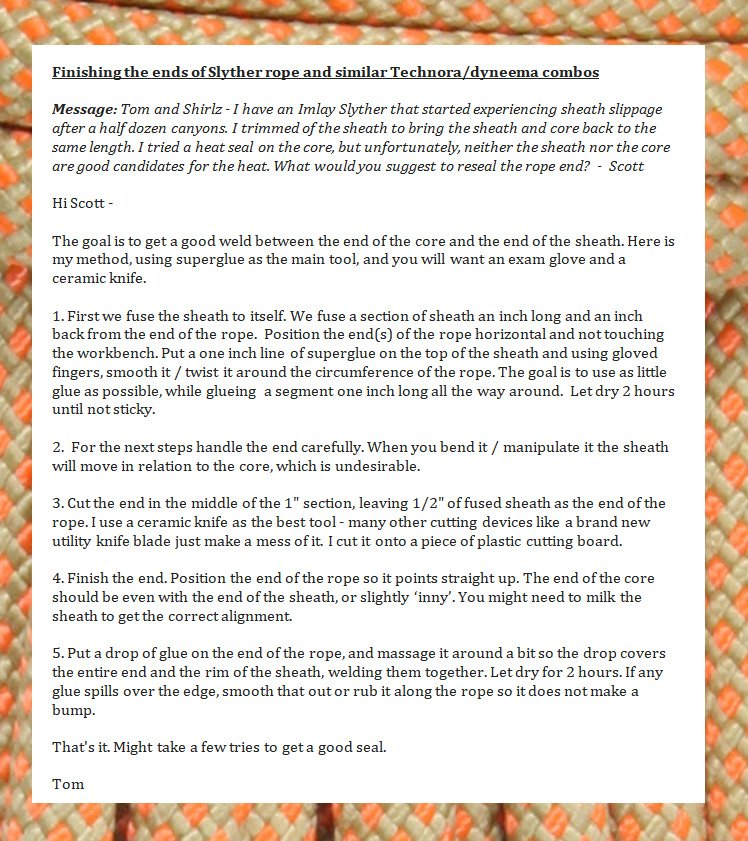Imlay Slyther 8.1 Tech Rope






Imlay Slyther 8.1 Tech Rope
2025 Shipment scheduled to arrive in Mt Carmel on June 24th. Alas, my costs went up by 15%, so the price is higher still by that amount.
Our new Slyther is a high-tech rope that is both durable, light, and slinky / smooth; and extracts the maximum possible cash from your wallet… (almost, there are more expensive ropes). 75% Technora Sheath (+25% polyester), Dyneema core. It is very light, 41.71 grams per meter, though not quite the lightest real rope available. Please read the hangtag, image #2.
Only available by direct sales, and only in 120’, 200’ and 300’ lengths - and full spools. There might be Odd Cuts from time to time. I added a 15’ length if people want to have it in hand before buying (limit, 1 x 15’ piece per customer). We can TRY to do something else if you ask for it.
(The actual rope lengths are 126, 210, and 315' to allow for 5% shrinkage. NOTE: Odd Cuts are the actual length…)
I highly suggest doing 3 wet/dry cycles before using the rope if you can. It improves the hand of the rope to a small degree. In my test of this, the rope shrank by 4% with the 3 cycles.
2 lb 12.8 oz per 100 feet ==
5 lb 9.6 oz per 200 feet. ===
8 lb 6.4 oz per 300 feet.
41.71 grams per meter
I have had problems Toggling (FiddleStick/SmoothOperator) with the Slyther as the knot overtightens. Be careful with this, and maybe position the stick a bit further out. Definitely untie and retie the knot before going last. Anticipate having to pull harder than usual.
The hangtag has many warnings about it being super-fast… which apply when the rope is brand new, but it breaks in quickly and becomes similar in friction to the Canyon Fire, though completely opposite in hand. I still don’t think third hands will work well with this rope even when broken in, but then I don’t like third hands in general. So you are on your own, as you always are.
Willie Hunt: Slyther is as static as any rope I have ever used. It's much lower stretch than C-IV. It's closer to BlueWater Canyon Pro/DS/Extreme or Tom's Polyester ropes, but lower like Atwood Grand: http://ropewiki.com/Rope_comparison Basically it feels like a steel cable in the stretch department, but like a dynamic climbing rope in the supple department. I love it!
from the 808 canyoneers (Hawaii):
Hey Tom! I just wanna give you props for the slyther rope. It's almost 3 years old and going strong. On average, a crew of 4 doing about 8 raps or more and it's only got some fuzz on the outside, but no core shots.
There is some core twisting, about 1-2ft on each side of a 210ft rope.
==Tom> Cool. Excellent to hear. You might cut the ends off and straighten them out, then re-glue with superglue.
==808: Trimming the ends was the plan 😃. I just figured i wanted to give positive feedback for such a phenomenal product.
==Tom> Appreciated. Now if only I could make it a bit less expensive.
==808: Considering the life you get out of it, it really is worth every penny. I firmly believe it pays itself off after a year or two.
Conservatively it's seen about 3200 rappels since we got it in 2022
==Tom>That sounds like an endorsement I should post on my website?
==Rene>Sure thing. You can give credit to the 808 canyoneers
